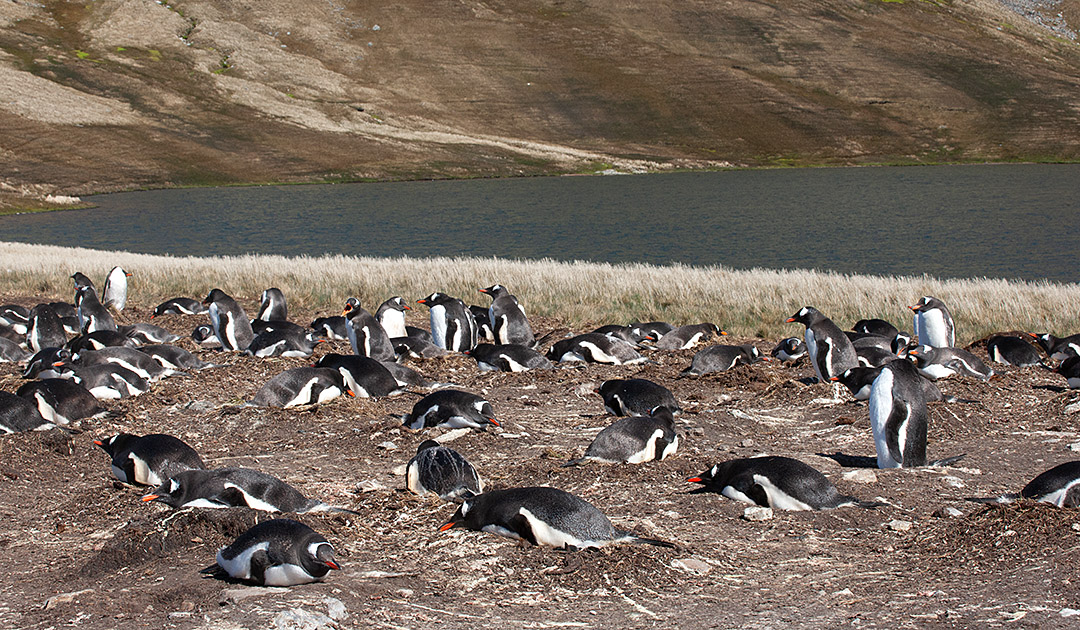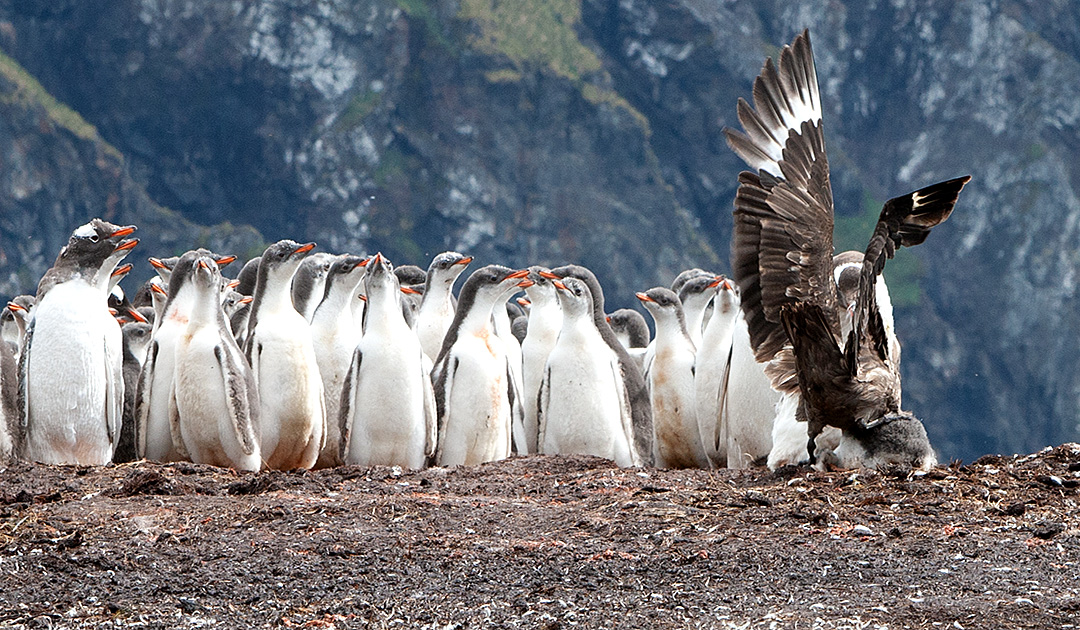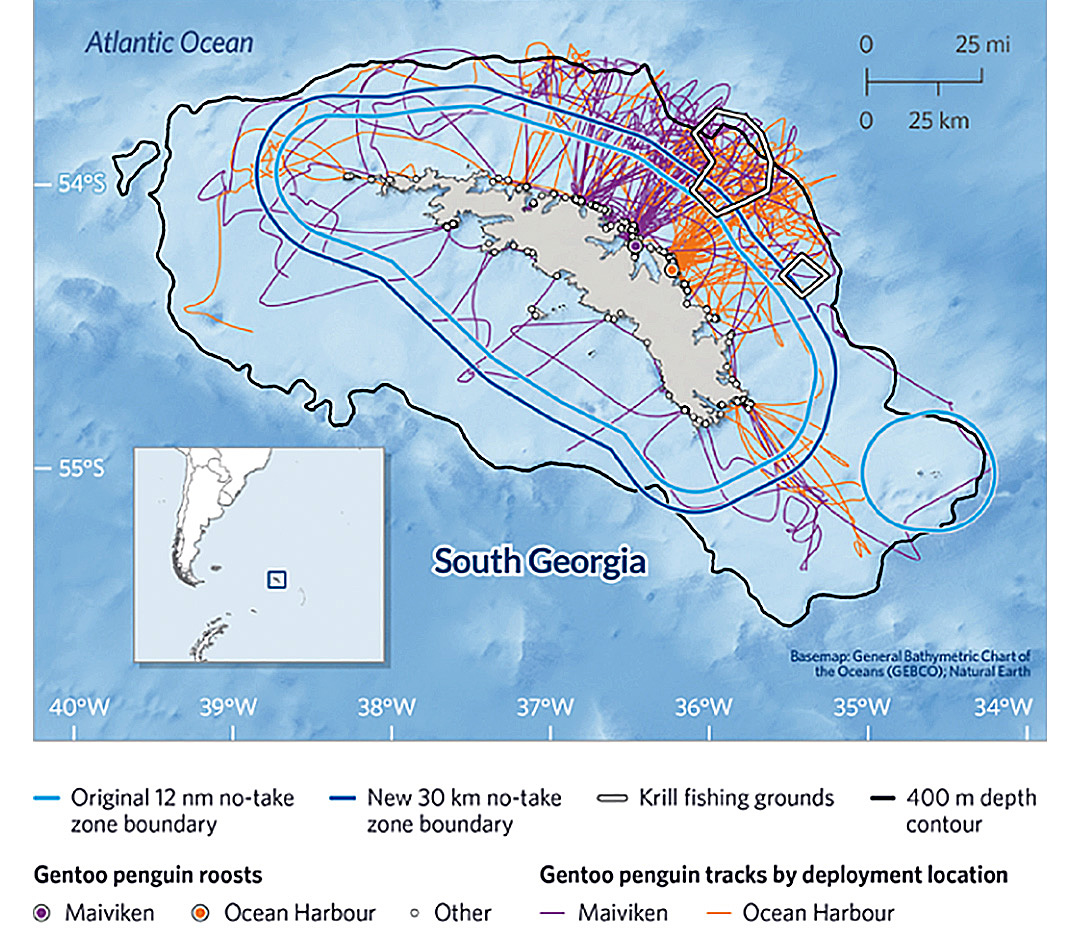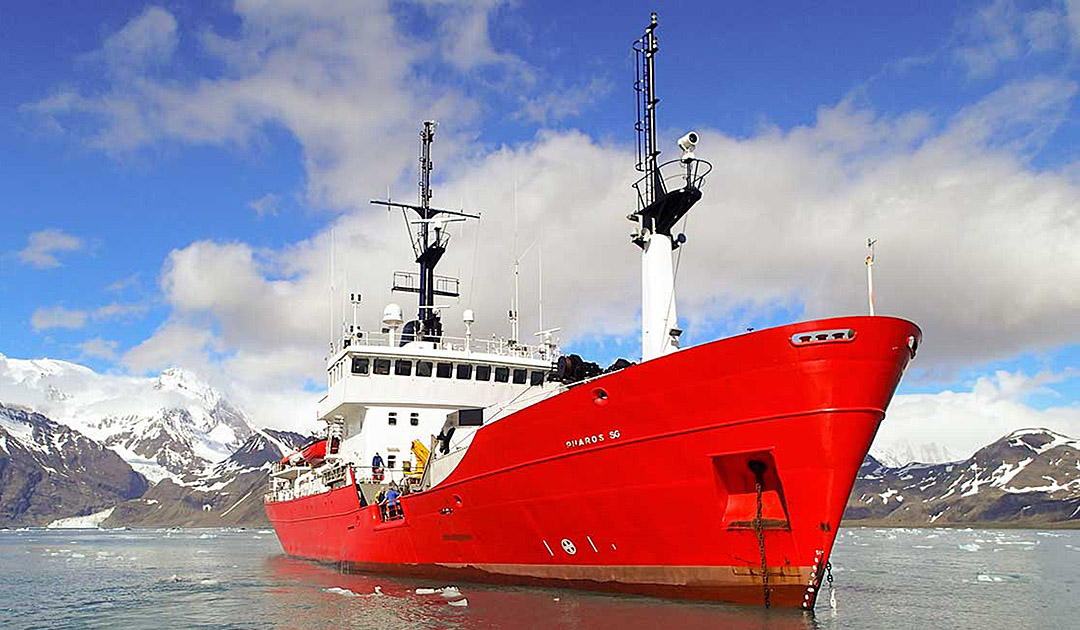
Halfway between the Argentine coast and the Antarctic Peninsula, the waters around South Georgia Island are one of the most biologically rich places in the world. So rich, in fact, that a quarter of the world’s gentoo penguin population lives there, feeding on abundant Antarctic krill in the region. Gentoo penguins are benefiting from a newly expanded No-Take Zone (NTZ) around the island, commissioned by the Royal Society for the Protection of Birds RSPB.

An average of 43,000 tonnes of krill are caught commercially each year in the waters around South Georgia. This is controlled and managed by the Commission for the Conservation of Antarctic Marine Living Resources (CCAMLR). Now the question arose whether the existing krill fishery poses a threat to populations of winter-dwelling animals such as gentoo penguins by competing directly for Antarctic krill?

To find out if competition exists, in winter 2018 a team from the British Antarctic Survey (BAS) fitted 16 gentoo penguins with satellite transmitters and recorded their movements for up to 76 days. Tracking data showed that gentoo penguins spent nearly half their time foraging for food such as krill beyond the existing 12-mile zone.
In addition, 600 faecal samples were collected from the colonies of tagged Gentoo penguins and analysed. It was found that more than a quarter of the faeces consisted of krill residues.
The study, led by the British Antarctic Survey and published in the journal Diversity and Distributions on January 13, 2021, found that penguins forage for krill during certain periods of the year in the same areas where industrial fisheries catch krill. This overlap could have negative consequences for the birds.

The study began in 2018 and as a direct implementation of the initial findings, the local government expanded the exclusion zone around South Georgia from 12.2 nautical miles (22.2 km) to 16.2 nautical miles (30 km) in December 2018. The expanded protection for gentoo penguins and other hunters now covers about 5,000 square kilometers (1,930 square miles).
After the full analysis is complete, the authors note that to protect the gentoo penguin feeding areas observed by this study in “bad krill years” the exclusion zone should be expanded to 55 km from shore. Here lies the 400 m deep continental zone. This depth represents the edge of the continental shelf, above which the sea depth increases considerably and Gentoo penguins rarely forage. In “good krill years”, when penguins stay closer to shore, the protected zone extent would remain at 30 km. This dynamic ocean management represents a good compromise between compliance and the maintenance of profitable fisheries.

The waters of South Georgia are considered one of the most biologically rich places in the world, with more described marine species than the Galapagos Islands, and are one of the largest marine protected areas in the world.
Heiner Kubny, PolarJournal





